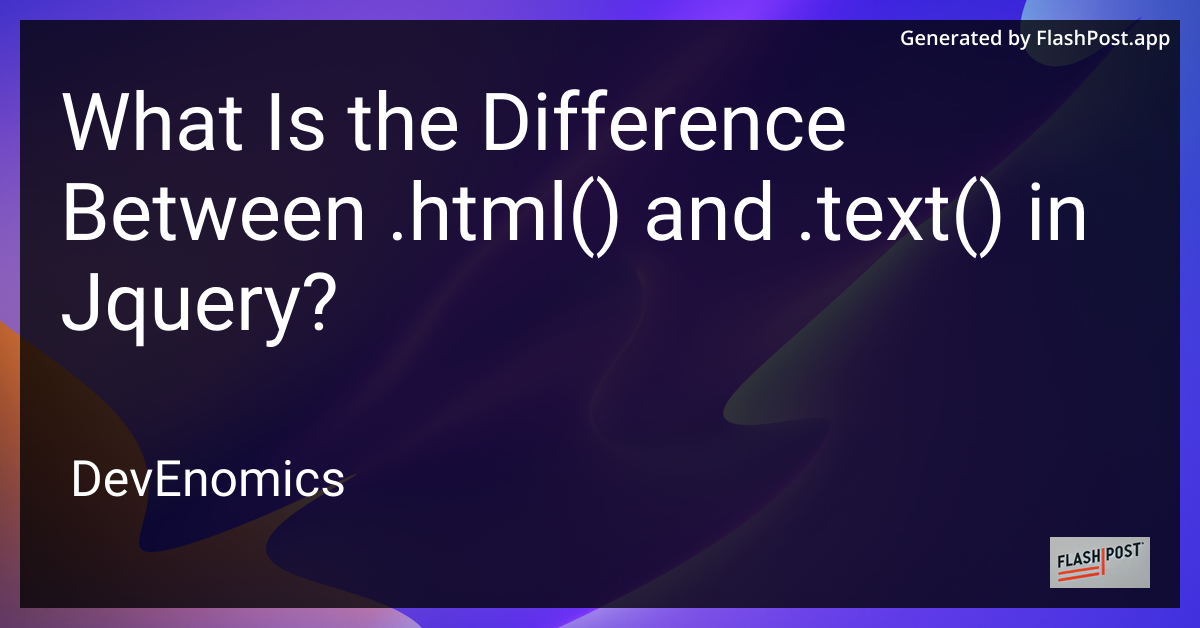

How to Select an Html Element Using Jquery in 2025?
As web technologies continue to evolve, jQuery remains a powerful and versatile tool for front-end developers. Despite the emergence of modern JavaScript frameworks and libraries, jQuery’s simplicity and robust functionality make it a go-to choice for many projects. In this guide, we focus on how to effectively select HTML elements using jQuery in 2025, a skill that is indispensable for both new and experienced developers.
Why Use jQuery for Selecting HTML Elements?
jQuery makes it easier to select, manipulate, and traverse HTML elements in a document. It abstracts away cross-browser inconsistencies, providing a clean and straightforward API that simplifies complex tasks. This is particularly useful in projects where you need to ensure broad compatibility and quick development cycles.
Including jQuery in Your Project
Before you can use jQuery to select elements, you’ll need to include it in your project. Here’s how to do it using a CDN:
<script src="https://code.jquery.com/jquery-3.6.0.min.js"></script>Alternatively, if you are using a framework like Symfony, you can read more about including jQuery in Symfony.
Selecting Elements with jQuery
Selecting elements using jQuery is incredibly simple. You can select elements by their tag name, class, or ID. Below are some examples:
Selecting by ID
To select an element by its ID, use the # symbol followed by the ID name.
var element = $('#myElement');Selecting by Class
To select elements by their class, use the . symbol followed by the class name.
var elements = $('.myClass');Selecting by Tag Name
You can select elements by their tag name directly.
var paragraphs = $('p');Combining Selectors
jQuery allows you to combine multiple selectors to narrow down your selection. For example:
var specificElement = $('div.myClass#myElement');Using Attribute Selectors
You can also select elements based on their attributes.
var inputElements = $('input[type="text"]');Advanced Selection Techniques
In addition to basic selectors, jQuery offers advanced methods to filter and refine your selections.
Filtering with .filter()
The .filter() method allows you to narrow down elements by applying a function or specific criteria.
var filteredElements = $('div').filter('.active');Using .find()
The .find() method traverses the DOM to locate descendant elements.
var childElements = $('#parentElement').find('.child');jQuery with Other Tools
jQuery can be seamlessly combined with other libraries such as Knockout.js for more dynamic applications. Learn more about using jQuery in a Knockout.js template.
Conclusion
As you continue to build web applications in 2025, mastering jQuery’s element selection capabilities will greatly enhance your productivity and the interactivity of your projects. Whether you need to select a single element or make complex DOM manipulations, jQuery provides the tools to do so with ease. For those working with frameworks like CakePHP, you may also find it useful to explore how to integrate effects, such as jQuery fading in CakePHP.
By honing your skills in jQuery, you can maintain both modernity and functionality in your web development practices.
